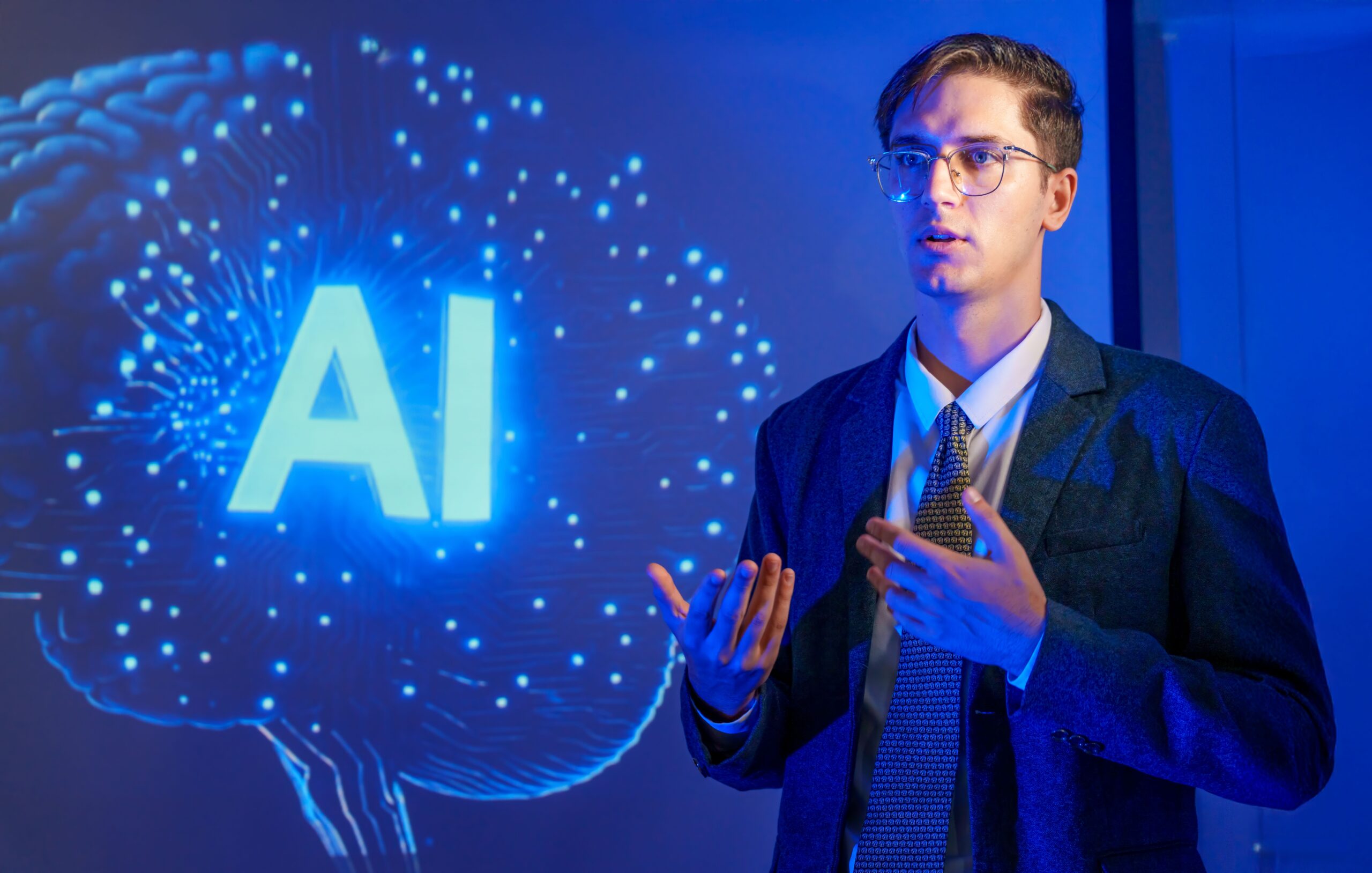
After testing different online AI detectors, we have drawn some conclusions. All these AI detectors will give you different AI scores in the same article. For instance, you have written a blog, all by yourself, and have decided to check it through an English online AI detector. All of these tools will provide results according to their algorithms. Now the question that arises is: are they biased? For that, you will have to go over this article till the very end!
Why AI Detectors Produce Different Scores on the Same Text
AI detectors rely on different linguistic models, training datasets, and probability thresholds — which is why the same paragraph may receive different AI scores across tools. Some detectors focus heavily on burstiness and perplexity, while others analyze semantic predictability, tone uniformity, or transition frequency.
To understand how these algorithms differ, the guide AI Detection explains how detectors identify machine-generated patterns such as repetitive sentence structures, low randomness, or overly consistent rhythm.
Detectors like the Free AI Content Detector also highlight sentence-level patterns, showing exactly why a detector flagged something. This makes it easier for writers and editors to compare how different models interpret the same passage.
Is an AI detector biased?

The researchers have found out that an AI detector usually gets biased toward non-native English writers. They concluded after performing several studies and providing an online AI detector with several samples that the tool misclassified the samples of non-native English writers as AI-generated content. They penalize writers with linguistic expressions. But to get more accurate results, there is a need for more studies and research.
Why Non-Native Writers Are Disproportionately Flagged
False positives often occur because detectors expect writing to follow native English structures. When a writer expresses themselves with culturally different phrasing or non-linear patterns, detectors may treat this as “AI-like” simply because it differs from standard English datasets.
This is why many ESL writers report being flagged unfairly.
To better understand these linguistic markers, CudekAI’s Free ChatGPT Checker evaluates sentence rhythm, coherence shifts, and structural predictability — areas where ESL writing naturally differs.
For additional examples, the blog AI Writing Detector breaks down how these patterns influence detection accuracy.
Can an online AI detector be wrong?
Let’s have a deeper look at this question. There have been many cases when an AI-generated text checker considers completely human-written content as AI content, and this is known as a false positive. In many cases, after using tools like QuillBot and AI-to-human text converters, AI content cannot be detected. But most of the time, human-written content is flagged as AI content, ruins relationships between writers and clients, teachers and students, and ends in very disturbing results.
Therefore, we shouldn’t put all our trust in these AI detector tools. However, top tools like Cudekai, Originality, and Content at Scale show results that are closer to reality. Along with that, they also tell if the content is human-written, a mix of both humans and AI or AI-generated. The tools that are paid are more accurate as compared to those that are free.
How Writers Can Reduce False Positives Without Changing Their Voice
Many writers assume they must “write like a native speaker” to avoid detection — but that’s not necessary. Instead, improving structural variation and clarity is more effective.
Use Natural Imperfections
Human writing contains uneven pacing, emotional cues, and non-uniform sentence lengths. These signals help detectors identify authentic work.
Avoid Over-Predictable Structures
AI often writes in rigid patterns. Breaking that pattern can reduce false positives.
Apply Human Editing Passes
A simple revision by a colleague or editor often restores natural flow. As your article itself notes, the human eye remains irreplaceable.
For deeper insights into how detectors interpret these elements, see Top 5 Free AI Detectors to Use in 2024.
Is content that is generated by AI detectors bad for SEO?
If the content you have written is generated by AI, has not used proper SEO measures, and has not checked the facts, it will be very dangerous for you. These AI generators usually make up fictional characters without letting you know. You will not be able to find out until you do research on Google and double-check. Further, the content will not be useful for your audience, and you will end up losing clients and the engagement of your website as well. Your content will eventually not follow SEO measures and can get a penalty. However, you can use different AI applications that will help in your content ranking.
Another important factor that we need to keep in mind is that Google does not care who has written your content, all it needs is content that has high quality, accuracy, and proper facts and figures.
Does AI-Detected Content Impact Google Rankings?
Google does not penalize content for being AI-written — it penalizes content for being low quality, factually weak, or unhelpful. Detection scores do not directly influence SEO, but they can reveal issues that Google might classify as “thin,” “generic,” or “spammy.”
If AI-generated text lacks depth or includes fabricated claims, it weakens E-E-A-T signals. That’s the real risk.
The article AI or Not: The Impact of AI Detectors on Digital Marketing explains how AI-like structures can reduce engagement and trust.
Tools such as the ChatGPT Detector also help writers identify monotone or repetitive phrasing that could harm readability.
What does the future hold?
If we talk about the future and what it holds for AI detectors, these conclusions have been made. We cannot fully trust an online AI detector, as after several studies and tests, it has been shown that none of the tools can accurately tell whether the content is AI-generated or completely human-written.
There is another reason, too. Content detectors like Chatgpt have introduced new versions and are working on the improvement of their algorithms and systems every day. They are now working their best to create content that mimics the human tone completely. On the other hand,
AI detectors do not focus much on improvement. With that said an AI-generated text checker can be helpful when you are at the editing stage of your content creation process. After getting done with the writing process, the best way to scan your content is in two ways:. One is to review the final draft with at least two to three AI content detectors. The second and most accurate one is to recheck the final version with the human eye. You can ask someone else to have a look at your final version. The other person can better tell you, and there is no replacement for human judgment.
Human-First Editing: The Most Reliable Content Quality Method
Even with AI detection tools, a human review remains the strongest quality safeguard. Editors naturally notice context gaps, unnatural transitions, or tone inconsistencies that machines often miss.
A practical two-step workflow includes:
- Initial Scan:Use tools like the Free AI Content Detector to highlight segments that appear overly automated.
- Human Revision:Add personal insight, adjust structure, and ensure the message aligns with the intended audience.
This hybrid method is recommended in AI for Teachers, where educators use detectors as guidance tools, not gatekeepers.
Can you fool an online AI detector?
It is unethical to write content with the help of AI and then convert it using tools like AI content to human-like content converters. But if you are writing all the text yourself,. You can follow some measures that will prevent your content from being flagged by an AI detector as AI-generated text.
All you have to do is to incorporate emotional depth and creativity into the text. Use short sentences and do not repeat words. Add personal stories, use synonyms and phrases, and avoid using words that are often generated by artificial intelligence tools. Last but not least, avoid using sentences that are too long. Instead, prefer the shorter ones.
Author Research Insights
This analysis was prepared after reviewing multiple AI detection systems, comparing output patterns across different tools, and studying real-world cases of false positives — particularly involving ESL writers.
To validate the insights, I examined the behavior of:
- Free AI Content Detector
- Free ChatGPT Checker
- ChatGPT Detector
Additionally, I cross-checked findings with CudekAI’s blog resources, including:
- AI Detection Overview
- AI Writing Detector
- AI or Not — Digital Marketing Impact
- Top 5 Free AI Detectors (2024)
The conclusions reflect practical application rather than theory, combining hands-on testing with established detection research.
Frequently Asked Questions
1. Why do AI detectors sometimes disagree with each other?
Each tool uses a different algorithm, dataset, and scoring method. Variations in perplexity analysis, syntax modeling, and semantic prediction lead to different results.
2. Can AI detectors incorrectly flag human-written content?
Yes. Non-native English writing, repetitive structures, or simple phrasing can increase false positives — even when the content is fully human.
3. Are AI detectors reliable for SEO decisions?
They’re helpful for quality checks but not direct ranking factors. Google evaluates usefulness, originality, and accuracy, not detector scores.
4. Is it ethical to convert AI text to human-like text using tools?
If the intention is to deceive or bypass authenticity checks, it’s not recommended. However, using tools to improve clarity or structure is acceptable.
5. Can AI detectors be used during editing instead of full assessment?
Absolutely. Many professionals use detectors as a supportive editing tool to identify overly automated passages.
The Bottom Line
An online AI detector is used by many professionals, teachers, and content creators to ensure that the content they are going to post sooner or later on their website is original and not generated by AI. But, as they are not highly accurate, try to follow in the footsteps that will help identify your content as human-written.



